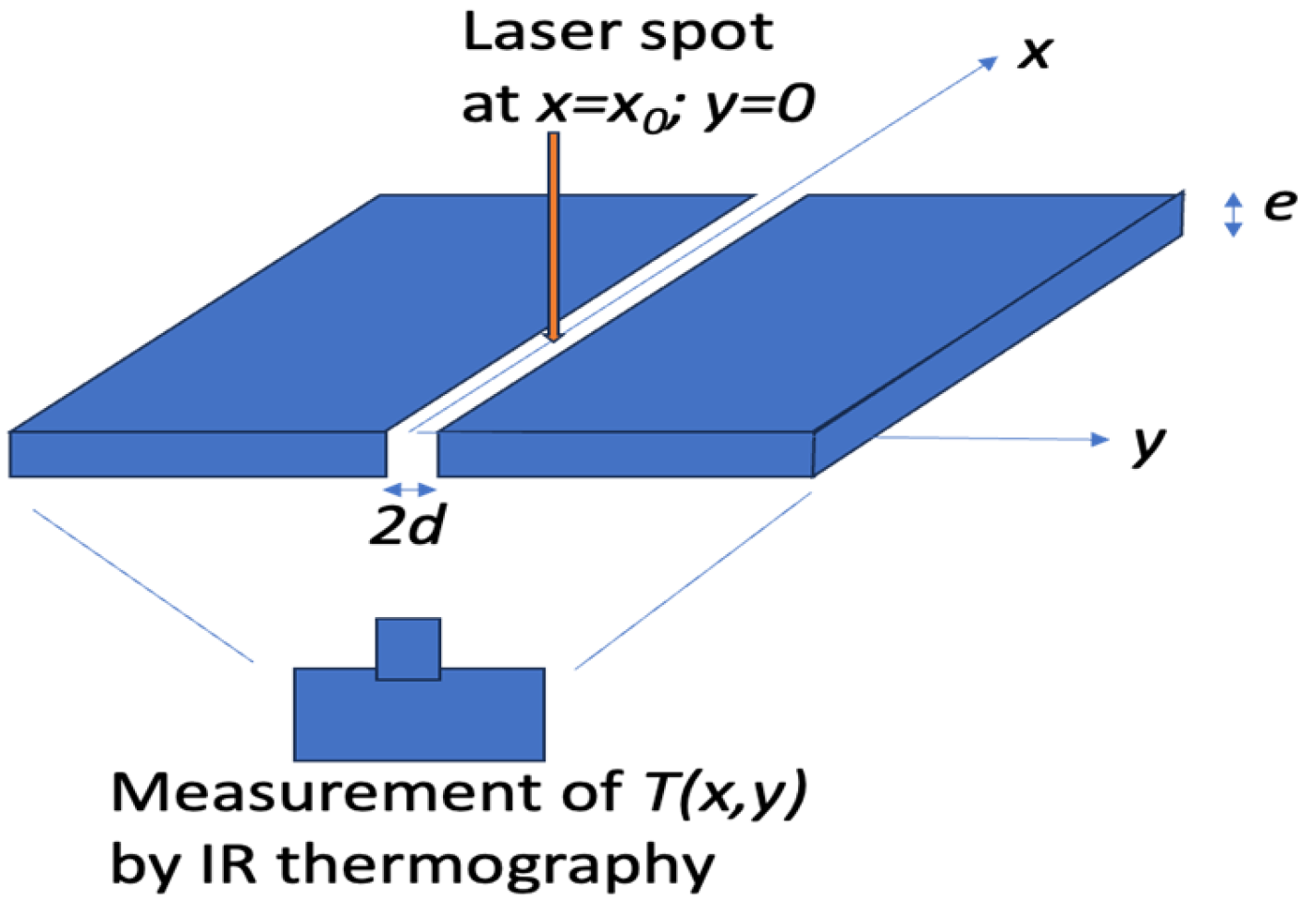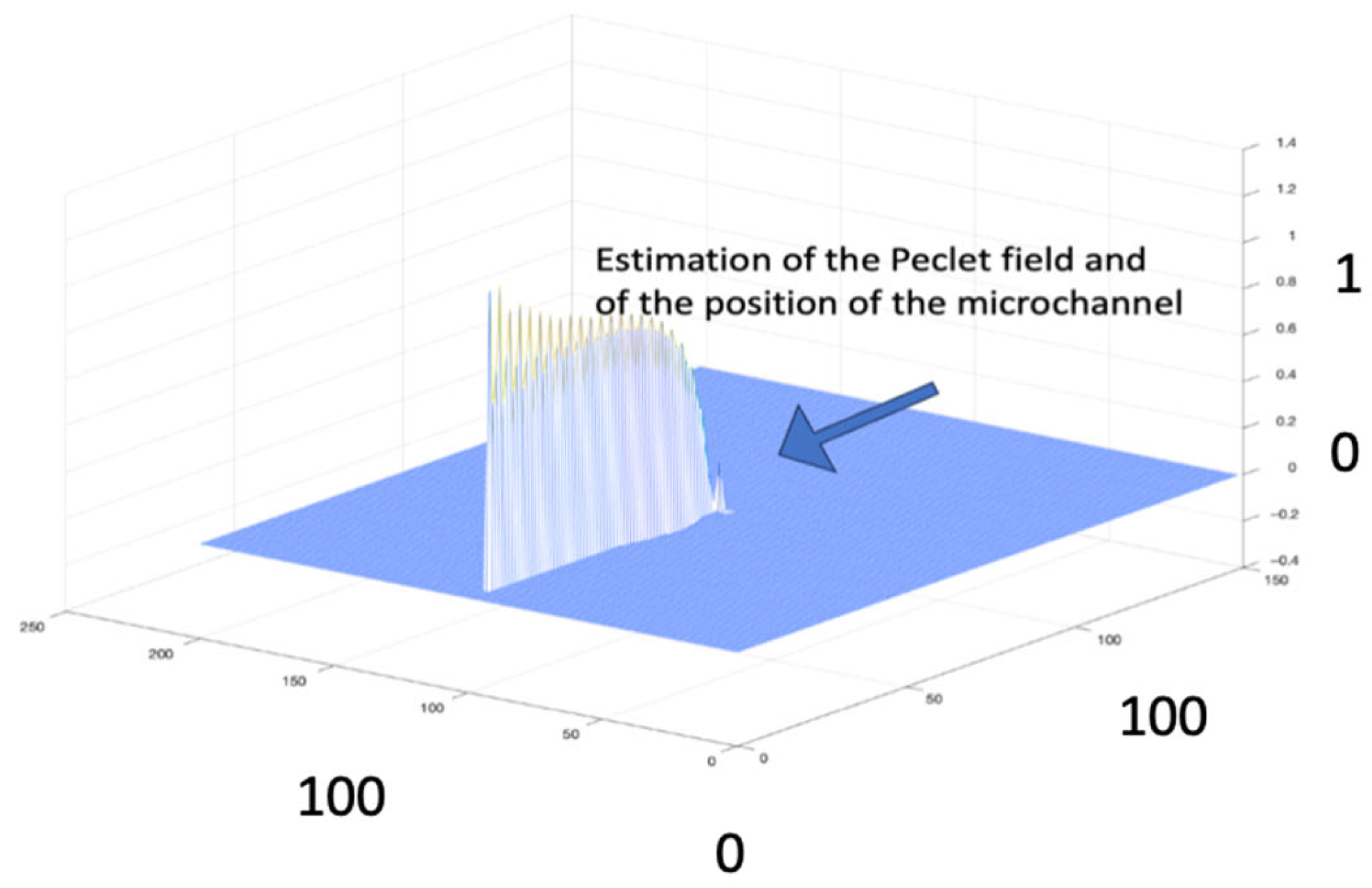Analysis of Spot Response Temperature Fields in Microfluidic Systems: Analogy with the “Heart of Voh” †
Abstract
1. Introduction
2. Analytical Solutions to the Forward Problem
3. Considerations of Experimentation and Inversion
Author Contributions
Funding
Institutional Review Board Statement
Informed Consent Statement
Data Availability Statement
Conflicts of Interest
References
- Arthus Bertrand, Y. Earth from the Air; Thames and Hudson: London, UK, 2005. [Google Scholar]
- Pradere, C.; Joannicot, M.; Batsale, J.C.; Toutain, J.; Gourdon, C. Processing of temperature fields in chemical microreactors with IR thermography. QIRT J. 2006, 3, 117–135. [Google Scholar] [CrossRef]
- Maillet, D.; André, S.; Batsale, J.C.; Degiovanni, A.; Moyne, C. Thermal Quadrupoles, Solving the Heat Equation Through Integral Transforms; Wiley: Hoboken, NJ, USA, 2000. [Google Scholar]




Disclaimer/Publisher’s Note: The statements, opinions and data contained in all publications are solely those of the individual author(s) and contributor(s) and not of MDPI and/or the editor(s). MDPI and/or the editor(s) disclaim responsibility for any injury to people or property resulting from any ideas, methods, instructions or products referred to in the content. |
© 2025 by the authors. Licensee MDPI, Basel, Switzerland. This article is an open access article distributed under the terms and conditions of the Creative Commons Attribution (CC BY) license (https://creativecommons.org/licenses/by/4.0/).
Share and Cite
Maire, J.; Svirina, A.; Sommier, A.; Chevalier, S.; Batsale, J.-C. Analysis of Spot Response Temperature Fields in Microfluidic Systems: Analogy with the “Heart of Voh”. Proceedings 2025, 129, 71. https://doi.org/10.3390/proceedings2025129071
Maire J, Svirina A, Sommier A, Chevalier S, Batsale J-C. Analysis of Spot Response Temperature Fields in Microfluidic Systems: Analogy with the “Heart of Voh”. Proceedings. 2025; 129(1):71. https://doi.org/10.3390/proceedings2025129071
Chicago/Turabian StyleMaire, Jeremie, Alisa Svirina, Alain Sommier, Stephane Chevalier, and Jean-Christophe Batsale. 2025. "Analysis of Spot Response Temperature Fields in Microfluidic Systems: Analogy with the “Heart of Voh”" Proceedings 129, no. 1: 71. https://doi.org/10.3390/proceedings2025129071
APA StyleMaire, J., Svirina, A., Sommier, A., Chevalier, S., & Batsale, J.-C. (2025). Analysis of Spot Response Temperature Fields in Microfluidic Systems: Analogy with the “Heart of Voh”. Proceedings, 129(1), 71. https://doi.org/10.3390/proceedings2025129071





